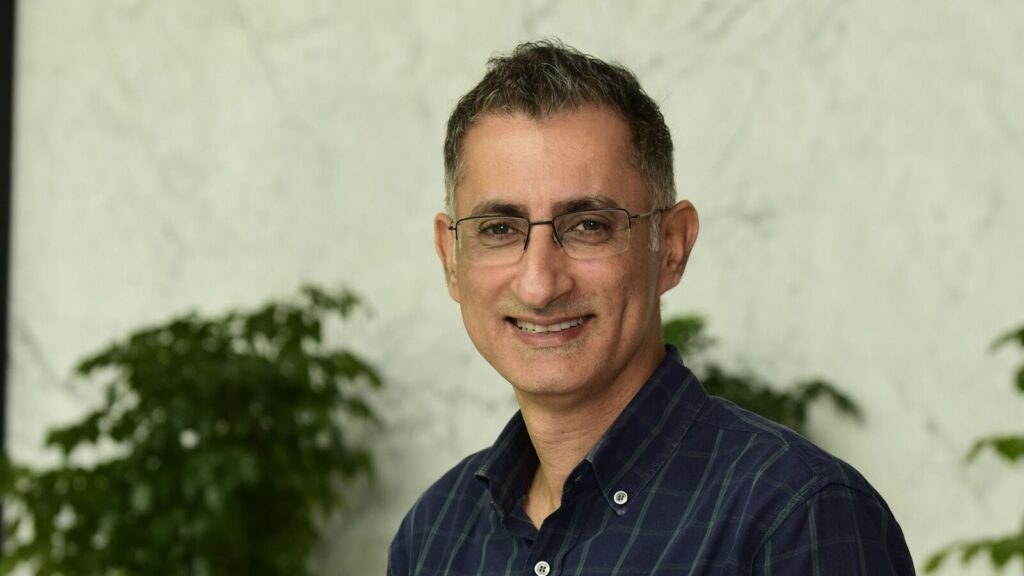From being a bank that proudly stood for physical reach with its ‘Kona Kona Kotak’ pitch, Kotak Mahindra Bank is now staking its brand future on a very different idea—the courage to dream big. With its latest campaign, Hausla Hai Toh Ho Jayega, the bank hopes to shift perception from transactional utility to an emotionally resonant, future-facing brand that partners with audacious Indians across banking, insurance and investments. In a wide-ranging interview with Mint, Rohit Bhasin, president–head affluent, NRI, business banking and chief marketing officer, explains the deeper shift behind the messaging, the aggressive media strategy driving visibility and why the brand’s belief system now goes far beyond advertising, into accelerators, storytelling platforms and cultural relevance. Edited excerpts:
You’ve moved from ‘Kona Kona Kotak’ to ‘Hausla Hai Toh Ho Jayega’. What’s the thinking behind this repositioning?
‘Kona Kona Kotak’ was right for its time; it helped establish our pan-India presence after the ING Vysya merger. But reach is no longer a differentiator. We realized Kotak was losing brand relevance, not recognition. So, we went back to first principles: what do we truly stand for? Historically, we were the first choice for India’s entrepreneurs and SMEs. We were a bank that understood the ambition behind the balance sheet. Today, Indians are more aspirational and audacious than ever. They need a partner who believes in their big, bold dreams. Hausla is our way of saying: if you dare to dream it, we’ll help you do it.
But ‘Hausla’ also implies risk, especially in a conservative, highly regulated sector. How do you translate that into real-world banking decisions?
It’s about balanced audacity. We’re not underwriting emotion, we’re underwriting ambition, backed by data, insight and industry knowledge. Whether it’s SME lending, investments or insurance, we’ve built tools and algorithms that allow us to assess risk holistically. And, importantly, this is a group-wide positioning, not just for banking. It applies across Kotak’s insurance, credit card and investment offerings too.
This campaign feels cinematic, even edgy, by Kotak’s previous standards. Was that deliberate?
We didn’t set out to be edgy. We wanted to tell a story that feels authentic to the new India. The visual tone reflects the diversity of aspirations—a farmer, a designer, a startup founder. That cinematic bus in our film is full of dreamers, all wearing our ‘infinity glasses’ to see a better future. That said, we’ve definitely pushed the storytelling style to break the clutter. It’s rooted in insight, not just aesthetics.
Also read: Uday Shankar flags need for fresh monetization models, warns against homogenized regulation
What about the campaign’s scale and media mix? How much are you investing and how has your approach evolved?
This is a full-funnel, all-in, high-impact blitz. As I like to say, it’s not just a brand film, it’s a brand commitment. We’re present across TV, digital, print, outdoor and social media. What’s changed dramatically is our spend split. Earlier, 65% of our marketing budget went to non-digital channels. Today, 65% is digital-first. We’re doing dynamic DOOH (digital out-of-home), hyper-personalized storytelling on social and outcome-based advertising across platforms. We’ve also returned to marquee events like the IPL after years, not just for impact, but because we’ve rationalized spends elsewhere to make it count.
Banks are now being judged not just on Trust, but on values, tech and experience, too. Where does Kotak see itself in that pyramid?
Trust is non-negotiable. When customers deposit their money, it’s an emotional decision rooted in safety. When they borrow, it’s transactional, they want the best deal. Our job is to be trusted and efficient. Tech enables both. Our app and platforms are designed to be invisible when needed, powerful when used. That’s why we’re investing so much in simplifying journeys, like 811, our digital bank, which sees account openings peak at 2 am.
What are the business KPIs you’re tracking for this campaign?
Spontaneous awareness is the top-line metric. Since the campaign’s launch, we’ve already seen a significant lift. What took a year earlier, we’ve achieved in two months. Consideration is next, then sentiment: does the campaign make people feel more positively about the brand? And, of course, business: we’re tracking traffic, conversions, leads and uplift across all digital assets.
Is this a one-off refresh or a long-term repositioning?
This is long-term. We want Hausla to become a part of Kotak’s DNA—something we can build on for years, maybe even decades. Of course, we’ll refresh the articulation to stay culturally relevant, but the core belief that we are the partner to an ambitious India will remain.
Also read: Marketing is a marathon, not a sprint: Federal Bank’s MVS Murthy
So, is this just a positioning exercise, or is there a product proof point?
This is very much backed by action. Our Kotak BizLabs accelerator, for instance, is one such proof. We received 1,594 startup applications and selected a final cohort of 55 companies spanning AI, fintech, agritech, edtech and sustainability. These startups are now part of a six-month programme with support in funding, mentorship and business acceleration. It’s run in partnership with IMA Ventures, NSRCEL (IIM Bangalore), and T-Hub. We’re putting real muscle behind the ‘Hausla’ idea.
And Hausla Talks?
That’s our content platform to inspire. Through Hausla Talks, we’re curating stories of extraordinary courage—ordinary Indians doing remarkable things. It’s our way of fuelling belief, not just selling financial products.

